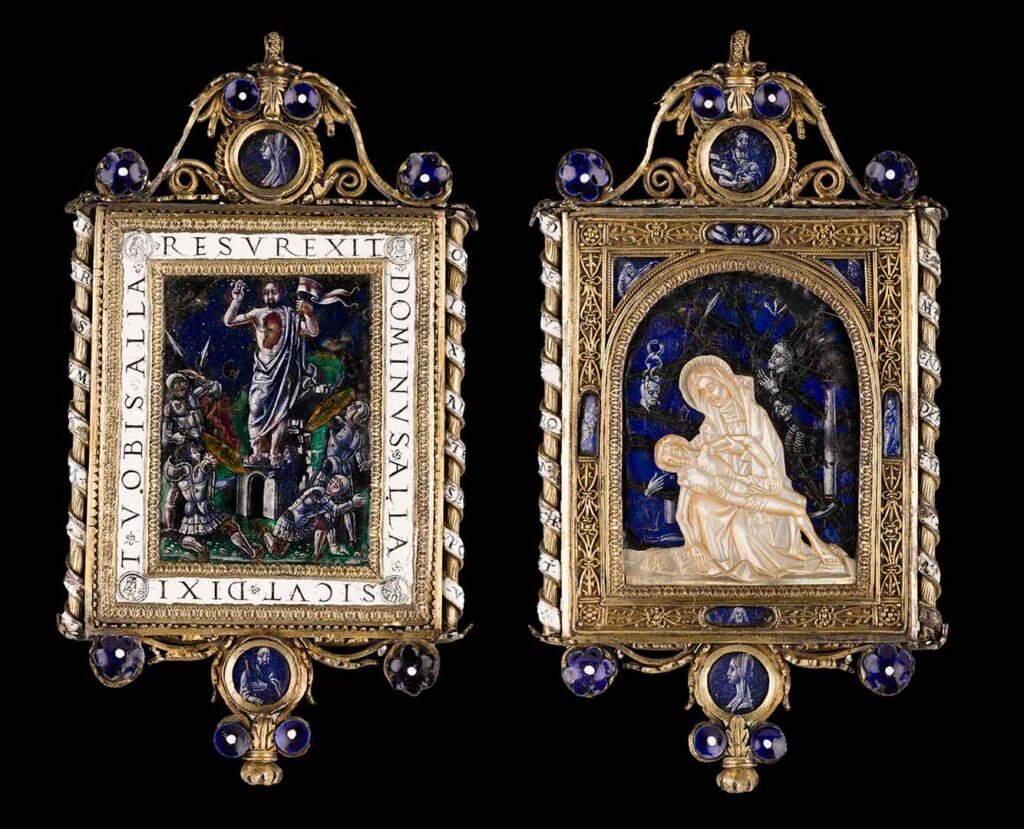Pendant Plaque
Lombardy , ca. 1499
Description

On the front of this precious object, there is the Pietà, engraved on mother-of-pearl and applied on a silver foil. At its sides there are enamels depicting episodes of the Passion, known as “Arma Christi”. On the frame, there are the Angel of the Annunciation, the Virgin and three prophets. Saint John the Baptist with the lamb is depicted in the tondo at the top, while at the bottom there is a female profile. On the other side of the plaque, there is the enamel depiction of the Resurrection, with an inscription taken from the gospel of Saint Mark.
In the tondo at the top there is another female profile, and in the one on the bottom is represented Saint Andrew with the cross of his martyrdom. On the sides there are two scrolls with sentences taken from the prayer of Saint Gregory the Great. The refined enamels were made in the late15th century in Milan. While the mother-of-pearl Pietà is the work of a contemporary German engraver.
Data Sheet
Author
Lombardy
Date
ca. 1499
Material and technique
Silver, gilt silver; enamels; mother of pearl
Measures
143.5 mm x 64.5 mm; weight 154.5 g
Acquisition
Gian Giacomo Poldi Pezzoli bequest, 1879
Inventory number
0572
location
Jewellery Room
The Jewellery Room is set up where Gian Giacomo Poldi Pezzoli’s private cabinet once stood, furnished with the newest and most luxurious equipment of the time and completely rebuilt after the war. The showcases house the Museum’s collection of goldsmithing, over two hundred pieces grouped into four sections: ancient enamels, sacred goldsmithing, collectibles, and jewelry, including a group of Etruscan pieces from grave goods.
collection
Jewellery
Gathered in the Jewellery Room, there are sacred items, enamels, jewels, objects de vertu that create a collection heterogeneous and the same time unique for its rarity and high quality. Among the highlights, Medieval Limoges enamels, works by Renaissance Lombard goldsmiths, 16th century jewels, 19th century parures by Fortunato Pio Castellani.
